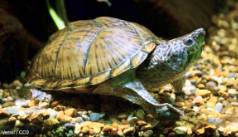

Striped mud turtle
(Kinosternon baurii)
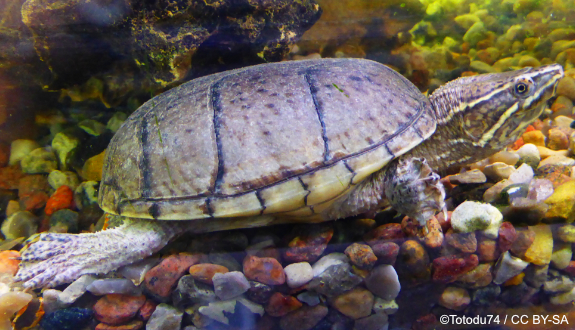
A big thank you to Valentin and Olivier!
Alternative species (click on the thumbnail to see the card)
Names
Scientific name
Kinosternon baurii
Kinosternon bauri palmarum
Common name
Striped mud turtle
Origin

Origin: Southeastern United States (Florida, Georgia, Carolina, Virginia)
Biotope: Americian. Swampy area rich in vegetation
Dimorphism
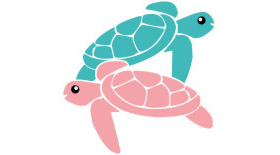
Male: longer and thicker tail with a horny claw
Female: the cloaca is closer to the edge of the breastplate
Group
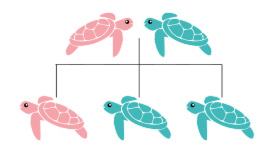
Kinosternidae
Length
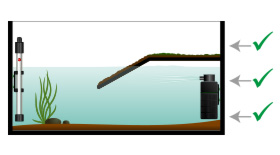
For 1 specimen: 80x40cm
or 32x16" (Lxl)
Temperatures

Hot spot (beach): 30/32°C or 86/90°F
Water: 22/24°C or 72/75°F
Difficulty

Easy
Size
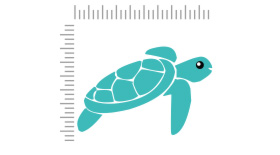
8 to 12 cm (3 to 5")
Longevity
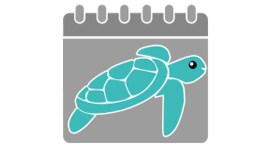
50 years
Zone
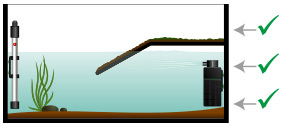
Earth (beach) and water
Individuals

1 or 3
Food
How to feed the Striped mud turtle?
Food
How to feed the Striped mud turtle?
The basis of its diet should be fresh food. We must also consider its carnivorous nature. So you will be able to distribute:
- - Various insects (for example crickets of suitable sizes). Beware of pesticides if you pick them up in your garden.
- - Small snails with their shells
- - Slugs (watch out for water pollution with slugs)
- - Meat (turkey fillet, chicken, never red meat!)
- - Preferably freshwater fish. For seawater, choose cold water fish and small ones, such as Big-scale sand smelt for example.
- - Fresh shrimp
- - More occasionally, you can offer poultry liver or beef, rich in vitamin A.
Of course, none of its food should be cooked, dried or fried.
Quantity side, a meal must represent the equivalent of the volume of the head (it corresponds more or less to the volume of the stomach).
You can possibly supplement calcium with food, but this is not necessarily necessary if the diet is sufficiently varied, rich and of good quality.
Plants will generally be badly accepted. You can try some Elodea, Salvinia, Lemna Minor (duckweed), lettuce leaves or dandelions for example, as well as ripe fruit. Kinosternons enjoying this kind of food are rare, but it does not cost much to try!
You will also give a vitamin supplement once or twice a week. Finally, a dry bone can be made permanently available in the tank (it can be left in the water or on the beach).
As for commercial foods, choose good quality pellets such as Zoomed. You can distribute it from time to time or to complete the basic diet.
During the first months of their life, babies will have to be fed every day. Growing up, the feeding frequency will increase from 3 to 5 times a week.
Behavior
What kind of behavior does the Striped mud turtle have?
Behavior
What kind of behavior does the Striped mud turtle have?
Kinosternon baurii is a relatively peaceful turtle, although territorial. Even if each animal has its mood, this species is quite dynamic and curious for a turtle. Some owners even observe that their turtle recognized them!
It is diurnal therefore active during the day.
It is the most terrestrial of Kinosternons: it spends as much time in the water as on the ground. It is also a "walker" because it moves mainly like that, even in the water.
Hibernation is not required if you do not wish to breed (in this case, hibernation will be preferable). Moreover, in captivity this turtle will not hibernate itself. However you can very well encourage it by installing it on moist soil covered with dead leaves. Note that it is not advisable to hibernate a specimen still juvenile.
Cohabitation
Who can live with the Striped mud turtle?
Cohabitation
Who can live with the Striped mud turtle?
All aquatic turtles are very territorial. Kinosternon is no exception! As a result, it is easily able to live alone on its territory.
If you want several individuals, cohabitation is more likely to be well between two females. On the other hand, the association of two males within the same Paludarium is impossible.
What about a couple? Male and female cohabit well only for a short time (a month or two, no more) to breed. After this period, it will be necessary to separate them. Indeed, as for some fish, the male is a fiery Romeo and eventually will exhaust the female by soliciting it too much for mating. The trick is then the same as for the fish: to install a trio of individuals composed of a male and two females. In this configuration, cohabitation can succeed between male and female.
Note however that it is always possible, regardless of sex, that there is too much dominance of a turtle on the other. The dominated turtle will then spend its time hiding and will be under constant stress. It will end up being pretty weak and prone to disease. In some cases, this poor turtle will even stop feeding. If you make the choice of the cohabitation of several individuals, keep in mind that cohabitation can go wrong, whatever your efforts. You will then have to assume a second identical installation to separate the individuals who do not get along.
Fish and shellfish are not recommended for cohabitation because they would serve as snack to these adorable but formidable predators.
Breeding
How to breed the Striped mud turtle?
Breeding
How to breed the Striped mud turtle?
The breeding season starts from May-June and lasts until October. Females can breed from 5 years old, males can mate at a younger age. Couples lay an average of 2-3 times a year, and laying usually contains 2-3 eggs.
To lay, the female will need a thick layer of substrate which will allow it to lay its eggs deep (about 20 cm or 8 inches). For this, place a box filled with soil, peat and sand, sufficiently wide and deep, instead of the emerged bank.
Put the male in contact with two females. After several matings, separate them.
After egg-laying, gently recover the eggs without turning them, and put them in an incubator at a temperature of about 29/30°C or 85/86°F for +-90% humidity.
The incubation lasts 3 to 4 months, and then the small ones come out of their shell. Note that they are quite fragile and must be fed every day.
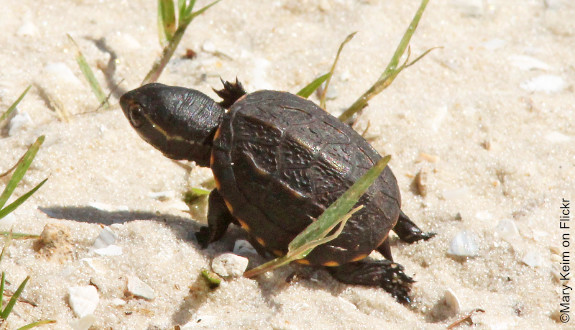
Its Paludarium
Which Paludarium for the Striped mud turtle?
Its Paludarium
Which Paludarium for the Striped mud turtle?
The Paludarium will consist of two separate areas. It should therefore be distributed as follows:
> Emerged beach: the turtle can rest and warm up. This range should be heated with a heat lamp (temperature 30/32°C or 86/86°F). Also install a UV lamp, essential for the proper development of your pet. There are now lamps that combine the UV and the heating side (for example the 2in1 Solar Raptor lamp). Choose a lamp with an index of 5.0, and install it at about 20 cm or 8 inches from the emerged exposure area (beyond this distance, the amount of UV that the turtle will receive is negligible). FYI, UV does not cross the water. The day/night cycle should be respected with 12 to 14 hours of day. Finally, think about creating a ramp to facilitate the access of your turtles to this part of the Paludarium!
> Aquatic part: the water must be kept between 22 and 24°C or 71 and 75°F using an immersion heater. The Kinosternon baurii is not a very good swimmer and it should not be put in too deep water volumes. Therefore, determine the depth of the water depending on the size of your turtle: it will be about 1.5 times the total length of the turtle. If the turtle has many points of support to rise to the surface, you can increase the water level a little more. Filtration side, opt for a high-performance system because water turtles pollute their environment enormously. As a result, an external filter with a flow per hour equal to at least 4 or 5 times the volume of water will be more suitable. However, do not create too much current because this turtle lives naturally in stagnant water. For example, you can "break" the flow of the rejection by directing it towards the wall of the Paludarium. Set up hiding places or shady areas with plants, stones or roots as this will reassure your turtle. The substrate is not mandatory: this can facilitate the cleaning of the bottom of the aquarium. However, for the comfort of this "walker" species, you can install a layer of aquarium sand. In addition, it will maintain good water quality and give a more natural look to your Paludarium.
Good To know
Find all additional information!
Good To know
Find all additional information!
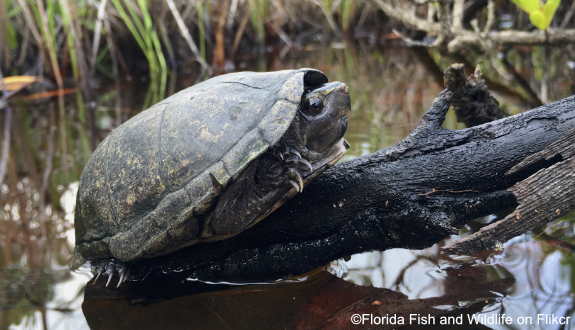
This species owes its name to Georg Baur, famous German zoologist.
Yours photos!

By Encyclo-Caro

By Emys
Comments
Sort by:
Please login to post comments
